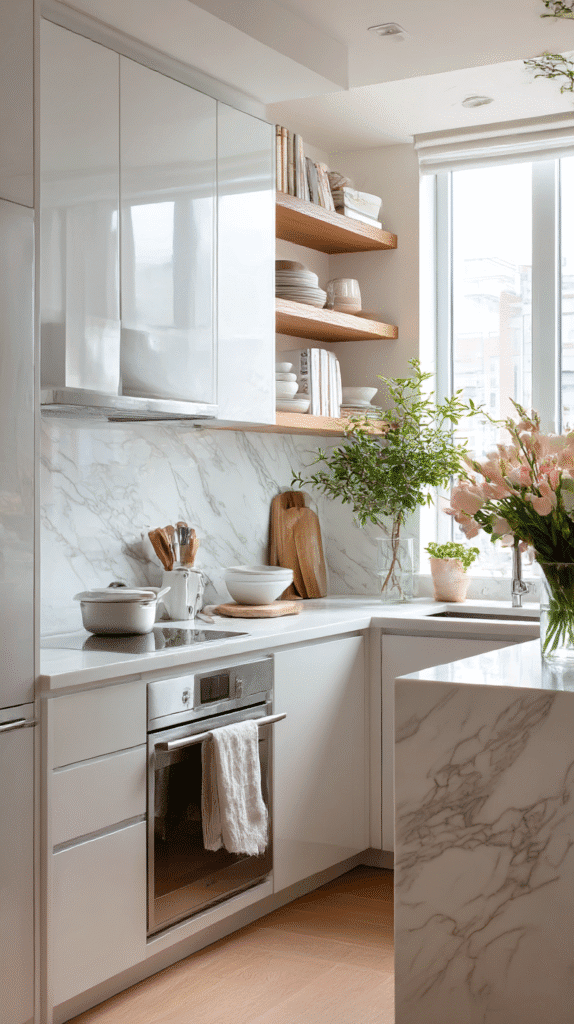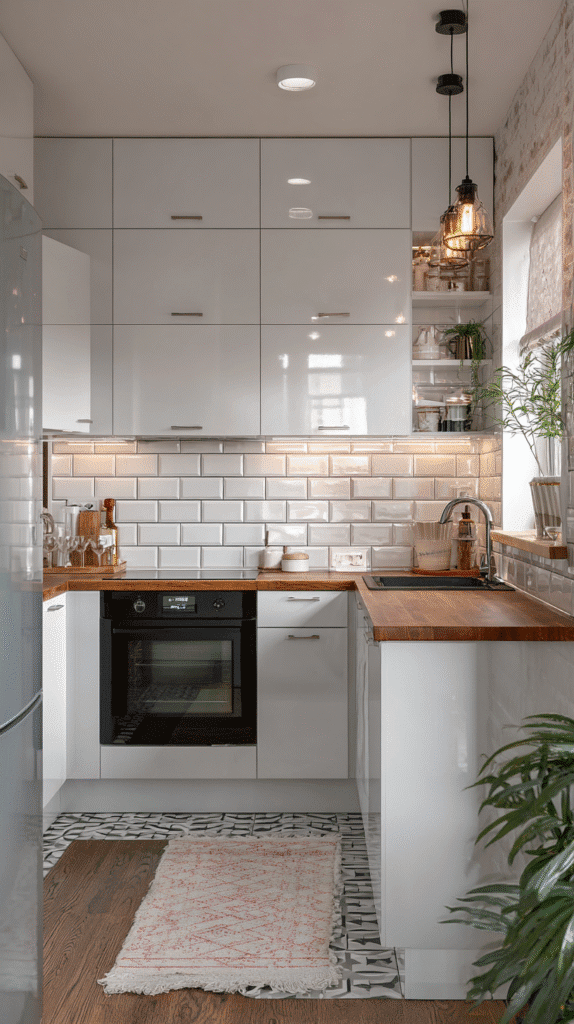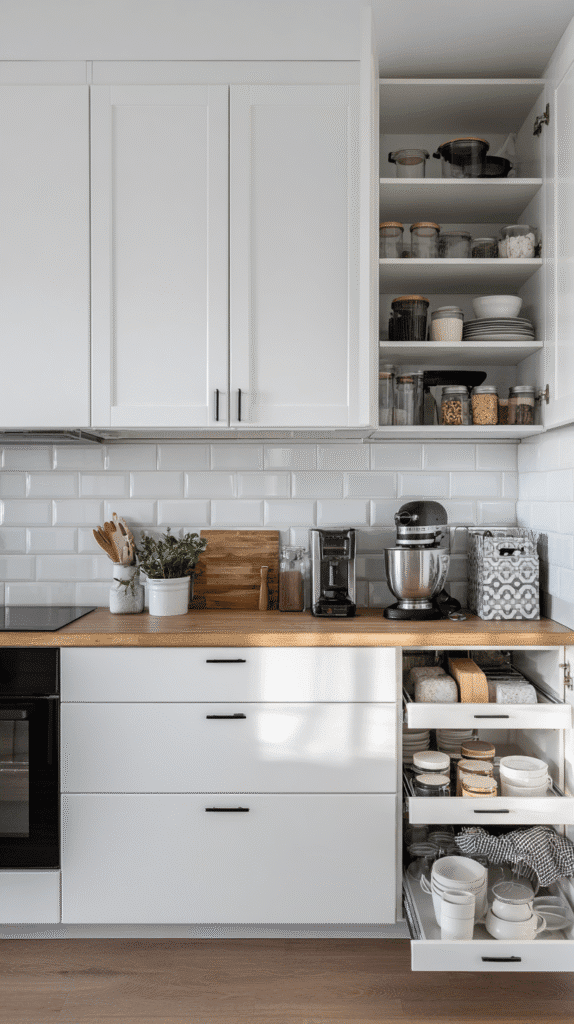
The Small Kitchen Challenge
If you’ve ever found yourself wrestling with a tiny kitchen that requires the dexterity of a Cirque du Soleil performer to navigate, you’re not alone. In bustling cities piling up skyscrapers and high-rises, small kitchens are the norm rather than the exception. And yet, whether you live in a snug studio in New York or a chic pied-à-terre in Paris, having a small kitchen doesn’t mean compromising on style or functionality. The clever use of space is an art that transforms constraints into creativity—a necessity-turned-virtue situation. In this blog post, we will dive into the heart of maximizing storage in a small kitchen and explore what 2026 has in store for kitchen design.
Understanding Small Kitchen Dynamics
Before we tackle the storage puzzle, let’s first decode the dynamics of small kitchens. Living in a compact space requires more than just downsizing; it’s a lifestyle choice that demands efficiency and ingenuity. The challenge lies in balancing aesthetics with practicality—how do you keep your kitchen both a visual delight and a functional workhorse? By integrating well-planned storage solutions suitable for petite spaces, we can retain harmony.
Small kitchens momentarily redeem themselves with the ‘less is more’ mantra, echoing minimalist design which remains trendy. Look at Pinterest boards filled with compact kitchens showcasing clean lines and decluttered surfaces. This is where strategic storage solutions, such as mobile kitchen islands or wall-mounted shelves, come into play.
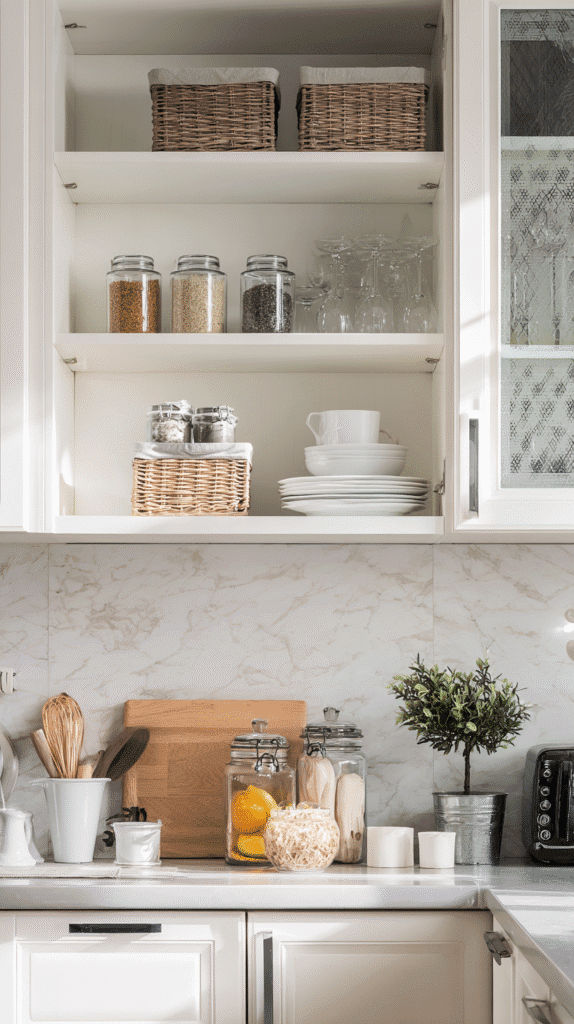
Maximizing Vertical Space
“When you can’t build outward, build upward.” This age-old wisdom encapsulates the essence of vertical storage. Embracing your kitchen’s vertical plane opens a world of possibilities. Upper walls are ideal for layered shelving units—think Ikea’s Kungsfors system which offers both aesthetic appeal and practical storage with a price tag starting at $50.
Moreover, pegboards can be a game-changer for dynamic vertical storage. As used by celebrity chefs and kitchen design enthusiasts, a pegboard wall allows for hanging pots, pans, and utensils within arm’s reach, adding both functionality and a dash of industrial chic. Houzz mentions pegboards as a big trend, showcasing an array of decorated pegboard projects that personalize this utilitarian option.
Designing Around Functionality
Space-saving furniture and multi-functional elements are the twins of smart small-space design. Consider a drop-leaf table that folds away when not in use, or a countertop that doubles as a cutting board. Brands like CB2 showcase contemporary pieces like the Bye Bye dual-use cart—part sideboard, part pantry. At $199, it’s a worthwhile investment for a functionality boost.
Another trick is having appliances that do double duty. There are lovely compact coffee makers that sit snugly beneath cabinets, freeing up counter space for other gadgets.
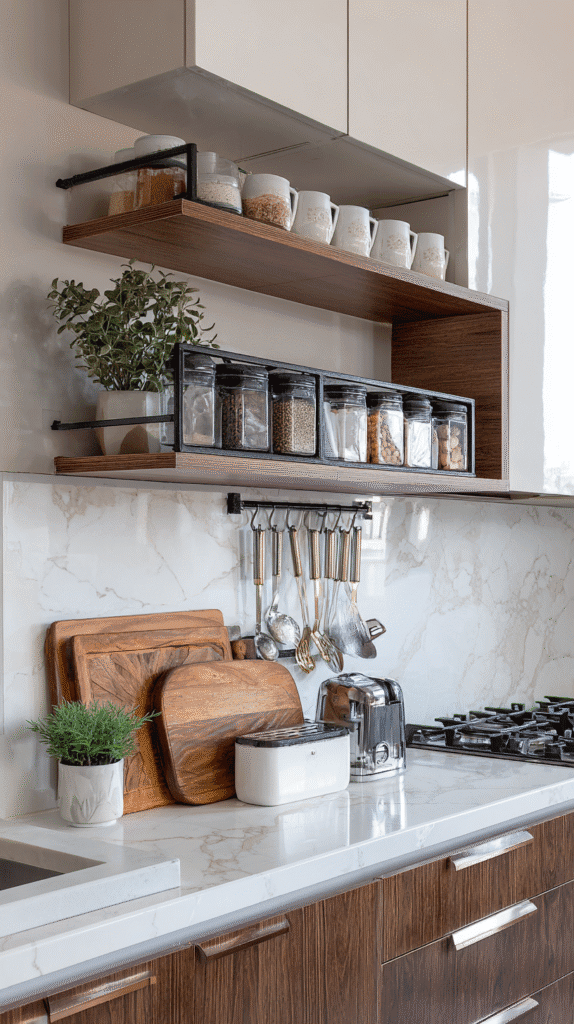
Cabinet and Drawer Innovations
In the world of cabinetry, the revolution is quiet but profound. No longer just about shelves and doors, modern cabinets are designed to do more. European brands—like Leicht—lead the charge with products featuring push-to-open technology that nix the need for bulky handles and boast elegant finishes.
Corner cabinets, notoriously known as clutter culprits, are illuminated heroes here due to innovations like pull-out carousels. These clever contraptions, priced around $200, scoop up the hard-to-reach corners making them easily accessible by simply swinging out.
Trend Forecasts for 2026
Looking into the crystal ball for 2026, signs point to sustainability becoming increasingly integral to kitchen design. Trends lean towards renewable materials and eco-friendly innovations. Expect to see more kitchens outfitted with Bamboo cabinetry for its earth-friendly credentials and minimalist vibe.
Social media platforms like Instagram have revealed users embracing modular, customizable storage solutions. This push towards personalization signals that future homeowners will see their kitchens as more than just culinary spaces—each an expression of their unique style and preferences.
DIY Storage Hacks
For those who revel in a good DIY project, there are countless playful and practical ways to increase storage on a budget. Rummaging through thrift stores might uncover forgotten treasures like vintage crates which, once wall-mounted, transform into darling cubbyholes for spices or cookbooks.
Learn the art of repurposing: an old ladder can morph into a distinctive rack for hanging plants or pots, bringing a dash of country charm. Engaging with projects not only invigorates your creative side but potentially saves money too.
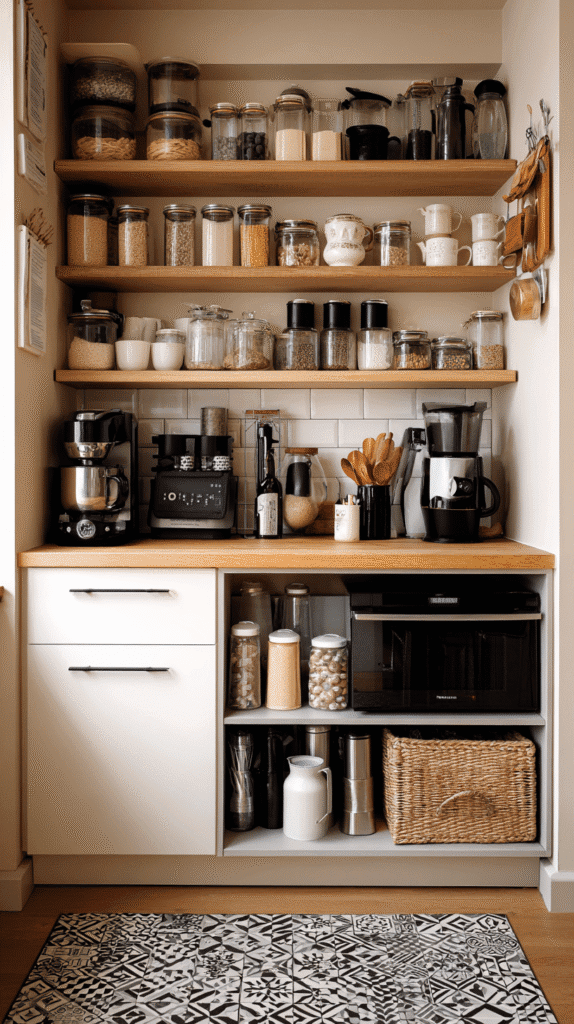
Expert Insights on Common Mistakes
Now that you’re equipped with storage-enlightenment, let’s reflect on what to ditch. According to design expert Sarah Sherman Samuel, one common blunder in kitchen reorganization is over-accessorizing which clutters rather than complements. Aim for simplicity—select a few cherished items on display rather than overflowing shelves.
Another common trap? Not considering the lifestyle aspect, a mistake noted by designers on Houzz discussions. Your kitchen should reflect your daily habits; overly complex solutions might deter regular use, while smaller, easily adaptable changes last the brainwaves of frequent remodels.
Conclusion
Don’t overlook the potential hidden within your small kitchen—it is a gem waiting to be polished. By maximizing every nook and cranny through creative solutions and keeping an eye towards emerging trends, you’ll find that small is powerful. As you stand on the cusp of 2026, look to your small kitchen not as a constraint, but as an opportunity to express innovation and personality through design.

